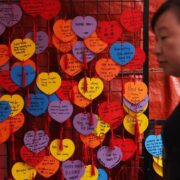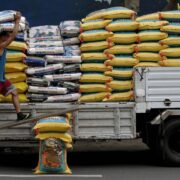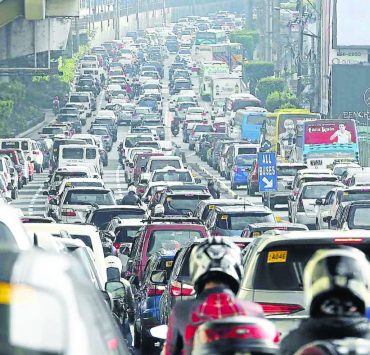Of Easter eggs and Resurrection Sunday traditions
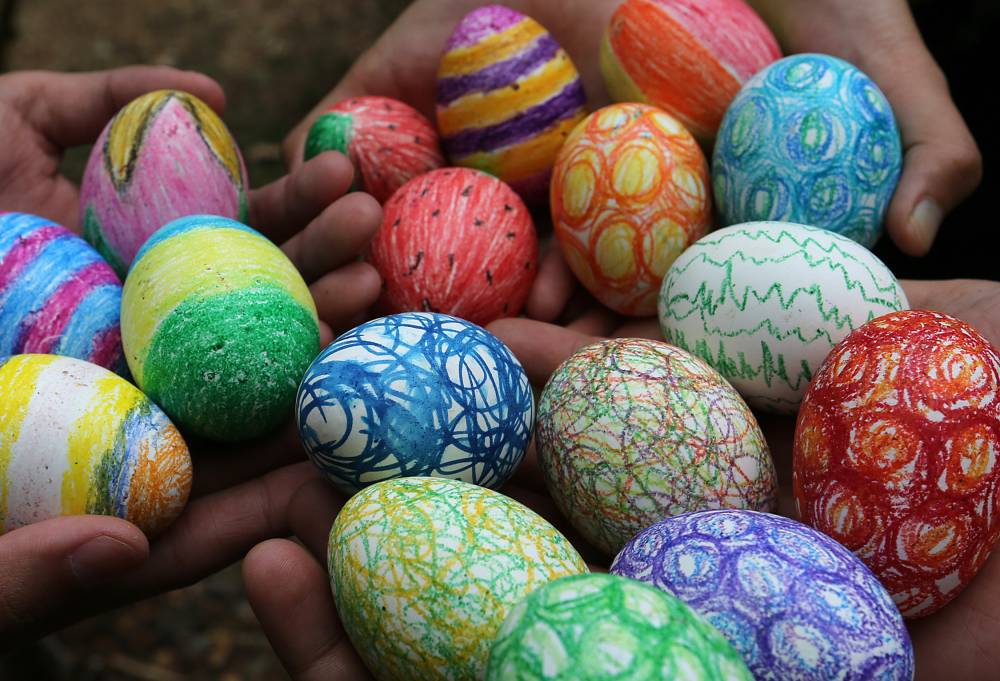
He is Risen!And just like that, it’s Easter once again, the joyous Sunday when Christians celebrate the resurrection of Jesus Christ. For those who are not Christian, Easter is a celebration of Jesus’ victory over sin and death. This tradition represents the fulfillment of the prophecies of the Old Testament, the revelation of God’s salvific plan for all of mankind—God’s greatest act of love.
Easter cross
In his reflection for Good Friday aired on the page of Dominus Est (Facebook.com/DominusEstPH), Archbishop Charles John Brown, Apostolic Nuncio to the Philippines, explained, “The cross (on which Christ was nailed and died, and where he delivered his Seven Last Words) is our life because it’s the place where Jesus adores the Father in the most perfect way.” There are three stages of the cross: the first is the cross draped in purple from Ash Wednesday to Maundy Thursday, representing the Lenten season; the second is the cross draped in black, from Good Friday to Black Saturday, the Day of Silence; and third is the cross draped in white, from Easter Sunday to Ascension Sunday, depicting the resurrection. Some follow the tradition of having the cross strewn with flowers such as lilies on Easter to symbolize Jesus’ triumph over death, His resurrection and His gift of everlasting life. It’s very meaningful!
Easter baskets
Meanwhile, a fun tradition is the Easter basket. We are used to receiving gift baskets during Christmas but we can meaningfully give gift baskets on Easter, too!
Following the Lenten season of fasting, Easter is a day of feasting. Hence, the Easter basket—a symbol of joy and thanksgiving—contains food for the first meal after the fast. Some items that are traditionally included in the basket are hard-boiled eggs, representing Christ’s resurrection; meat such as ham, symbolizing joy and abundance; sausage, symbolizing God’s generosity; smoked bacon, symbolizing God’s mercy; cheese, symbolizing the need for moderation at all times; salt, a reminder that we are the salt of the earth; roast lamb or lamb-shaped butter or sugar or pastries, representing Christ as the Lamb of God; bread, a reminder that Christ is the Bread of Life; and wine, symbolic of the Blood of Christ. A white candle is often also included, representing Christ as the Light of the World; and the basket is covered with white linen, symbolizing the shroud in which Christ’s body was wrapped.
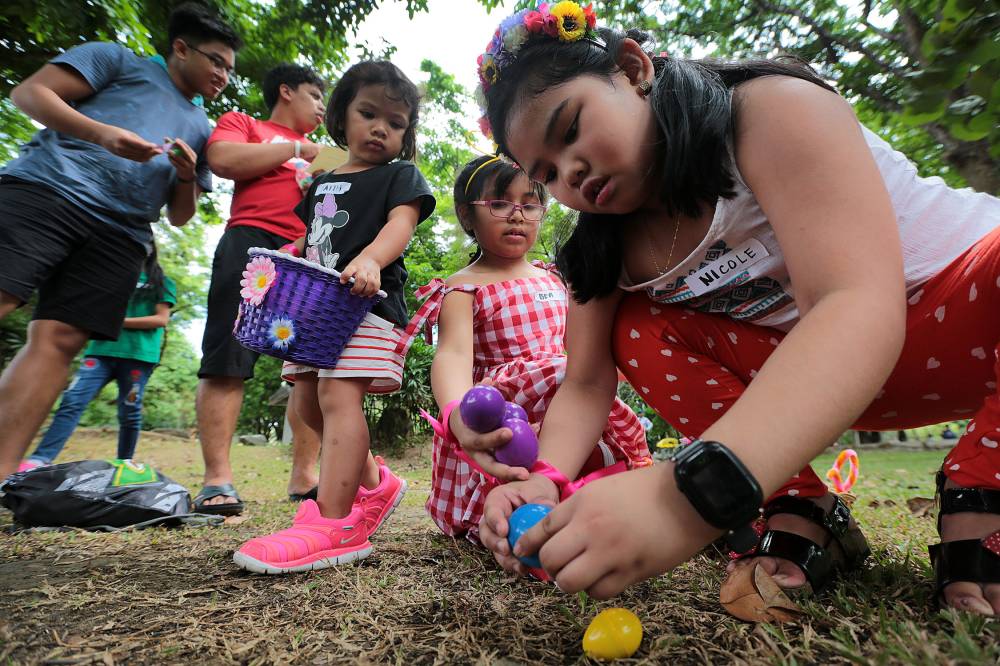
Easter eggs
There is also the tradition of Easter eggs. The egg is considered a treat come Easter because in the past, it was among those forbidden by the Church during Lent. Pope St. Gregory is said to have issued the following rule, recorded in a letter to St. Augustine of Canterbury: “We abstain from flesh, meat, and from all things that come from flesh, as milk, cheese and eggs.”
The egg is also used as a symbol of Christ’s resurrection from the tomb, explained this way: just as a little chick pecks its way out from the egg shell to emerge to new life, Christ emerged from the tomb to new and everlasting life. This may also be inspired by the Roman saying “Omne vivum ex ovo” or “All life comes from an egg”—hence, the egg came to be a symbol of everlasting life. Meanwhile, the unbroken egg symbolizes the rock tomb of Christ which, when broken, symbolizes that He has risen from the dead.
Europe is known for having elaborately designed Easter eggs, especially in Poland and Ukraine. These are considered true works of art! Meanwhile, in Yugoslavia, Easter eggs bear the initials “XV” for “Christ is Risen,” a traditional Easter greeting. In Russia, their royal family reportedly went to the extreme, with exquisitely detailed jeweled eggs made by goldsmith Carl Faberge from the 1880s until 1917. In Germany, eggs that go into Easter meals are not broken but emptied out, with the empty shells painted and decorated with bits of lace, cloth or ribbon, then hung with ribbons on an evergreen or small leafless tree.
But it is this Ukrainian folktale that is most poignant: On Good Friday, when Christ was made to carry the cross, a poor peddler happened to go to the market in Jerusalem to sell his basket of eggs. The peddler witnessed Jesus carrying His heavy cross through the streets, being taunted by the Romans and mocked by the crowd. After Jesus had fallen due to the weight of the cross, the Romans made the peddler help him, leaving his basket of eggs on the road. The peddler’s name was Simon of Cyrene. When he returned to retrieve his basket, he found the eggs painted with bright colors and beautiful designs. After the resurrection of Christ, he realized that the eggs were a sign of Christ’s rebirth. To this day, the Ukrainian people continue the tradition of having pysanky—raw eggs decorated using an ancient wax-resistance method—as part of their Easter celebration.
In the United States, the Easter egg hunt or egg picking, especially for kids, became very popular, with the tradition even being staged at the White House. It was also in the United States in the 1920s that chocolate eggs, or chocolates in the shape of an egg but hollow, became a craze.
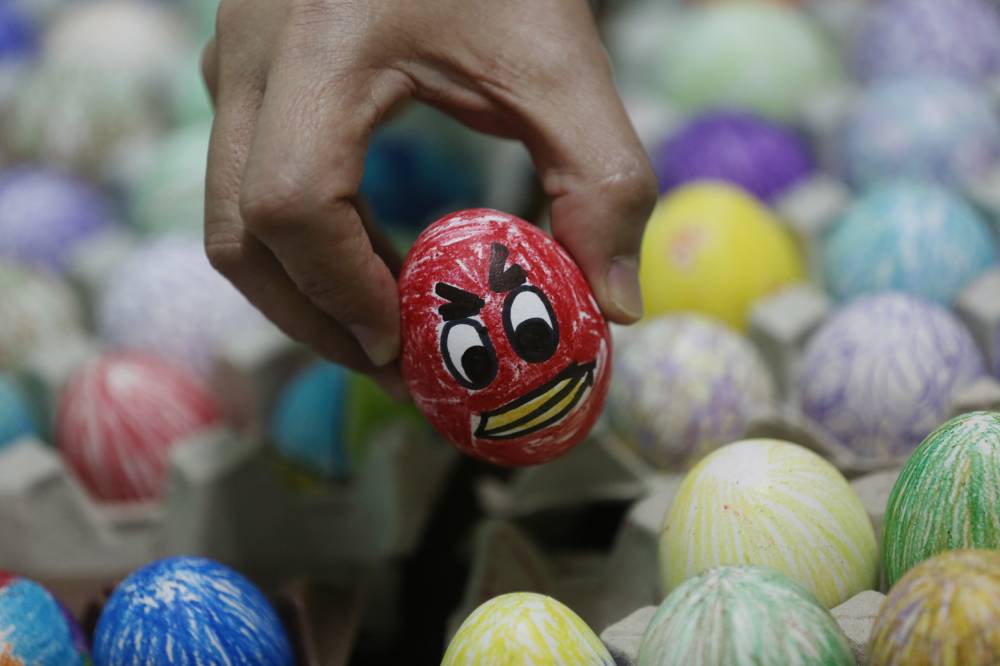
Easter Lamb
Lamb also has great significance in Easter celebration, whether an actual lamb or pastry made in the shape of a lamb. This is inspired by the sacrifice of the lamb for Passover, when the Jewish people were freed from slavery in Egypt and taken to the promised land; and by the symbolism of Christ as the new Paschal lamb, who was sacrificed for our sins and whose blood made the perfect and everlasting covenant, freeing us from the slavery of sin and opening the gates to the true promised land of heaven.Easter Sunday Mass
Whatever Easter tradition you decide to incorporate into your celebration today, the most important would be Holy Mass. Pope Francis will celebrate mass at 10 a.m. in Rome (5 p.m. in Manila) with an Urbi et Orbi blessing at 12 noon Rome time (7 p.m. Manila). Here in the Philippines, His Excellency Archbishop Charles John Brown will be the main presider at St. Alphonsus Mary de Liguori in Magallanes in Makati, concelebrated by parish priest Msgr. Bobby Canlas, at 11 a.m. And of course, you must check with your local parish for their schedules.
Happy Easter, everyone! May Christ’s resurrection inspire you to a life renewed in the spirit! INQ











